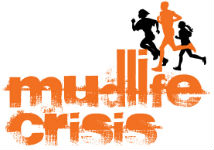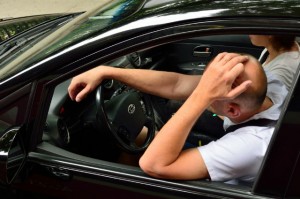It’s a conspiracy! The powers that be are trying to keep everyone from getting enough movement in their lives!
It’s only partially true. Yes, “they” are trying to keep you from getting enough movement in your life, but only in the interests of things like efficiency and speed. And as we’ve talked about before, there are a ton of reasons that we need to shuck this ideal from our lives.
Let’s look at what we’re conditioned for by modern society: we’re told that we need a more comfortable car for those long commutes, just to make them bearable. We’re pulled into conversations about how there isn’t enough parking anywhere and we need to look for the nearest spot. We get marketing messages all day long that tell us we’re judged by the car we drive. And it’s all making us think that spending as much time in the car as possible is the ideal – it allows us to live in the suburbs and have the comfort of driving wherever we need to go.
And that’s killing us slowly.
Not only is the extra sitting for an hour or two a day (depending on the length of your commute) horrible for us, particularly in those bucket seats that have all the blood in our bodies flowing to our hineys, but we’re getting stressed out because of all those horrible drivers around us, too much traffic, that one stupid traffic light that, no matter when we hit it, we never seem to catch, and more. That much stress on a regular basis totally goes against nature and just adds to the amount of wear and tear on our bodies and minds. It’s just not good for you.
“But Jamie,” you ask, “what am I supposed to do? That’s just the way the world is!”
Oh… my dear, dear friends, you could not be more wrong. There are so many hacks that you can apply to your lifestyle to get more walking in that it’s absolutely crazy. You just need to think outside of the box.
And that box has four wheels and a radio in it. You commute in it every day.
Back before I was movement/obstacle racing guy, I was carless commuter guy. Yeah, that was my previous passion, and I’ll be frank it’s led into my current lifestyle really nicely. I used to run the blog Carless Columbus (previously known as Bike Commuting in Columbus) where I expounded upon the many ways that you could use a bicycle and later your own two feet and public transportation to replace your car and get some great exercise and movement throughout the day.
(I still don’t own my own car. My wife and I do own a car, but it’s primarily her car. So we do have a way to get to places we want need to go on weekends and such, but it’s not the way I get around primarily.)
So today, we’re going to do a summary of some of the big things you can do to avoid the car trap and improve the amount of movement you have in your life.
Here’s a key factor that you need to keep in mind: you’re looking for opportunities to walk, not ways to avoid it.
It’s a bit tough for us to do this a lot. Our evolutionary mindset is to avoid movement as much as possible because energy sources such as food were harder to find. It’s perfectly natural for us to avoid moving as much as possible, then.
But that’s not the world we live in today. Now, our biggest enemy is too much food and the ability to not move. We need to consciously find ways to add movement into our lives. And one of the best is to hack our commutes.
The first suggestion, then, that I give people: move. Not your body, your home.
The first objection people generally give to not owning a car is where they live. “Everything is so far away from where I live! I have to drive five miles just to get to the grocery store!” There’s this impression that people have where you have to use a car to get anywhere in the US. That is simply not true, and there are a ton of resources out there to help to find places you can move and still be close to the things you need – groceries, schools, etc. The carless commuting movement is growing in this country (and is already huge in a lot of other places around the world).
Here’s a website to help you with that: Walkscore.com. Walkscore uses mapping software and the presence of various services in a neighborhood to give a score for the usability of walking, public transit, and cycling as ways to get around in that neighborhood. Scores are awarded from 0 to 100 in each category.
So for example, my neighborhood here in Columbus looks like this:
It’s got a Walk Score of 79, which means that most errands can be run on foot. It’s got a transit score of 46, which is partially due to Columbus’s public transportation system being just so-so (though it’s fine for my purposes usually); and a bike score of 79, meaning it’s flat and has a few bike lanes around. (Don’t get me started on bike lanes and such, by the way, I have a whole other blog mentioned above where I go off on those…)
You can enter the city you live in and look for the best neighborhoods for walkability and such on the page, and learn a whole lot about what’s available. For extra points, you can look at where you live now and possibly find resources you didn’t even know were available! For instance, Columbus as a whole has a Walk Score of 40 – but obviously my neighborhood is a 79. There are places you can live in your city that are totally accessible for walkability, I can almost guarantee you (unless you live in the country or something, and we can cover that in a moment).
The second suggestion I’m going to give you: sell your car.
“Jamie’s gone off his rocker!” you cry. Well, people have been saying that for years. But it can be done. As I said, I haven’t owned a car since 2006, and I do just fine. Not owning a car means you have to look at other options: cycling, walking, public transportation, and more. There are a ton of resources on this topic as well. One is a book that I used for advice for getting around: How to Live Well Without Owning a Car: Save Money, Breathe Easier, and Get More Mileage Out of Life by Chris Balish. I still look at it from time to time to see what else I can do.
(If I do need a car, that’s what car rental places are for. Budget Car Rental and I have a pretty solid relationship at this point.)
Obviously, this goes hand in hand with living in a more walkable area as I explained in the first suggestion. But once you get the hang of it, a couple things are going to happen:
- You’re going to have more money for your own uses (race entries, for example!). The typical car costs around $700 per month to operate, including payments, gas, insurance, maintenance, parking, and other costs. A bus pass in Columbus costs $62.00. Good shoes cost $100 or so and last for months. A good bicycle can cost anywhere from a couple hundred to a thousand dollars, depending on what you get, but then it lasts for years with minimal maintenance.
- You’re going to start changing your mindset about distance. Walking trips of a mile or two will be seen as no big deal. I know that it takes me about twenty minutes to walk a mile, and I have schools, libraries, groceries, hardware stores, shopping, a movie theater, restaurants, barbers, dentists, veterinarians, and more all in that area.
- You’ll start to change the way you think about shopping. When shopping regularly at places that are close by, you won’t feel like you have to do all the shopping for a week all at once. A quick walk to the grocery store to get stuff for dinner is no big deal, so you can do it more often and have fresher food, and it’s not a big deal to carry a couple of bags home with you. Extra loaded movement and fresher food: if that isn’t win-win, I don’t know what is.
- You’ll start to think differently about the elements. Hot days will mean you’ll sweat a bit more, but you’ll get used to it more quickly and it will cease to bother you as much. Same with cold days. Rain won’t mean a thing as long as you have a good umbrella or raincoat. You’ll become more adaptable.
The third suggestion: get a new job or change the one you have.
The last time I did a job search, one of the conditions I put on it was that I had to be able to get there via bicycle or public transportation. I found one where I can do both. And it’s worked out fantastically.
Another possibility – figure out how to work from home, and then you can set up your home office any way you want and get movement in throughout the day.
“Okay,” you say, “this is all great. I am looking for a new place where I can live carless. But I’m not there yet. What can I do?”
No biggie. Even if you still own a car, you can save yourself lots of driving by parking further away from your final destination. Look for parking a mile from your office or workplace, for example. Park there, and walk the rest of the way.
Or, if you’re in or near a big city and have good public transportation, perhaps you can find public transportation where you can drop your car off and ride that in the rest of the way. That will still necessitate some walking from the bus/train stop to your workplace. And you can also use it for shopping and the like.
Start experimenting with ways to avoid driving. Make it a game. See how many places in your neighborhood you can get to without driving.
Get a Fitbit and challenge yourself and others with step goals. My friend Joy and I have been challenging each other for a few weeks now and having a great time trying to outdo each other!
There are a ton of things you can do to hack your commute and avoid the stress of driving regularly. Read Chris Balish’s book, check out my Carless Columbus blog, and feel free to ask questions! I’ve been doing this lifestyle for a while, and I can answer a lot of the issues you may come up with!
What are some things you can do to hack your commute? Tell us below, and please share this post around on social media and with friends and family!







